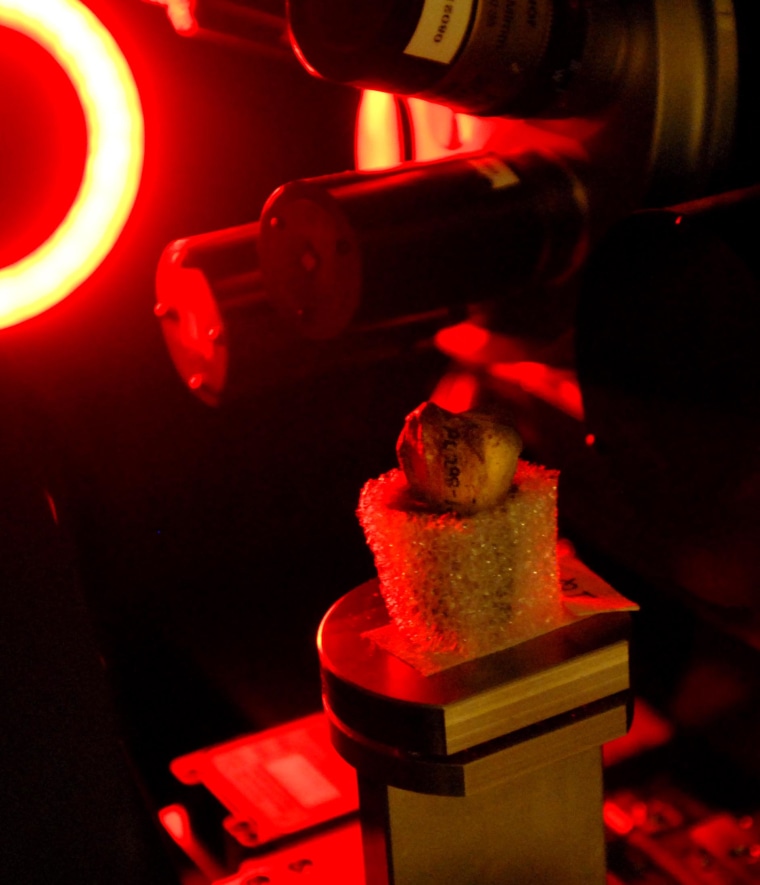Digital X-rays have turned one of the world's best-known ancestors of the human species inside out, and may answer questions about how our ancestors came down from the trees and walked, scientists said Friday.
The team at the University of Texas in Austin, in collaboration with the Ethiopian government, completed the first high-resolution computed tomography or CT scan of the human ancestor known as Lucy, who lived 3.2 million years ago.
"These scans we've completed at the University of Texas permit us to look at the internal architecture — how her bones are built," anthropology professor John Kappelman, who helped lead the work scanning all 80 pieces of the skeleton, told Reuters in an interview.
Scientists hope studying a "virtual" Lucy will offer further clues about the human ancestor's lifestyle. Lucy, found in Ethiopia in 1974, is the best-preserved example of Australopithecus, a genus of hominids.
"It opens it up to people who, instead of having to travel to some distant museum to see the original, can actually call it up on the desktop," Kappelman said.
Kappelman said the scans could tell more about how Lucy's bones fit together — and thus whether she and her kind climbed trees as well as walked.
"We're quite certain this set of studies we're going to be conducting here with the CT data are going to go some distance to resolving this longstanding question," Kappelman said.
Lucy's fossil is visiting the United States as part of an exhibit organized by the Houston Museum of Natural Science. The 3-foot-tall (1-meter-tall) skeleton is about 40 percent complete. Researchers worked around the clock for 10 days after the museum's exhibit closed in Houston to scan all 80 surviving pieces of the skeleton at the University of Texas' High-Resolution X-ray Computed Tomography Facility.
Once the scanning was complete, Lucy was put on display again at Seattle's Pacific Science Center, where the skeleton is on exhibit through March.
In the past, the Ethiopian government has been reluctant to let Lucy's bones travel abroad.
"These scans will ensure that future generations are familiar with Lucy and will know of Ethiopia's central contribution to the study of human evolution," Jara Mariam, director general of the country's Authority for Research and Conservation of Cultural Heritage, said in a written statement. "A virtual Lucy will be able to visit every classroom on the planet."
Kappelman said the scans will be a boon to future generations of researchers as well.
"It's going to help us fill us in what was one of the earlier stages ... of our evolution to really better understand the behaviors of an extinct cousin. In some ways it's like ... being able to tune the time machine back to 3 million years ago, jump in and pop back and be able to reconstruct what this fossil was doing on a day-to-day basis," Kappelman said.
"She's arguably now and I think will be for a long time, the most famous fossil on planet Earth," he added.
This report includes information from Reuters and msnbc.com.
